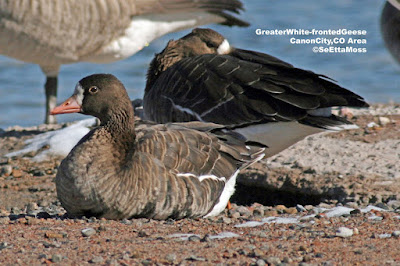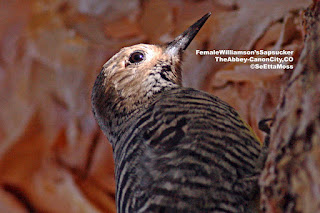I found this male Yellow-bellied Sapsucker in Centennial Park in Canon City last week. It was an exceptionally shy sapsucker which made it most challenging to get these pics as it reacted to the mechanical clicking of my digital DSLR camera (I turned off the bells when I first got the camera but it has distinct clicking noises when I shoot pics that bothers some birds). This appears to be a different bird than the male sapsucker I found on Oct 29 (see post on Oct 29, 2009) as that bird had extensive bright red on it's crown as well as it's chin and throat while this bird has somewhat limited red on it's crown, a red throat but some white on it's chin. The second pic from the top shows the extensive white barring, much with a buffish tinge, that is distinctive of Yellow-bellied Sapsuckers. This bird was also much more active than the many other Yellow-bellied Sapsuckers I have seen in not only the Canon City area, but Pueblo, Colorado City and Salida. It hitched its...







